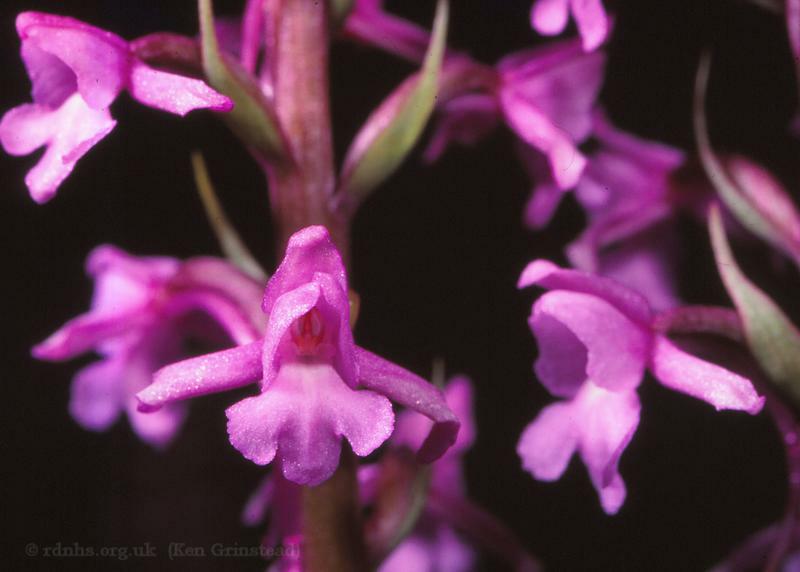The large collection of slide photographs made by Ken Grinstead was given to Graham Saunders to look after when Ken died in 2010. The collection comprised almost 10,000 slides stored in a four drawer metal filing cabinet. When Graham moved away from the area in 2016 he passed on the collection to David Cliffe who has spent many hours scanning some of the images. The project was completed in 2020 and Rob Stallard has helped put the images online as a searchable database on our web site rdnhs.org.uk. The following background information on Ken Grinstead has been edited from David Cliffe’s Presidential Address report in ‘The Reading Naturalist’ No. 70 (2017).

Ken Grinstead was born at Lynmouth, Devon, in 1923 and attended the grammar school at Barnstaple. This involved travel on the Lynton and Barnstaple Railway, now long gone, and it was probably this that began his life-long interest in railways. He was a scientist, and the nature of his paid work suggests that he must have enjoyed higher education.
During the Second World War, he served with the Royal Signals in northern France. He is said to have erected an aerial at Windsor Castle for King George VI, though whether this was just so that he could tune in to the B.B.C. and whether Ken actually met the king isn’t clear.
After the war, he worked for the Ministry of Defence at Porton Down on microbiological research. This must have suited him: people who knew him say that he was “a perfectionist” who was “meticulous” and “highly organised.” He was also a good cook, and a connoisseur of good food and wine.

Natrix natrix, Grass Snake, UK. 1990. Ken Grinstead collection
In his spare time, he was a keen amateur botanist, with a special interest in orchids, and an expert photographer. He was also, as a young man, a motorcycle enthusiast, who rode a Vincent bike. During his time in Wiltshire, he did a lot of work for Salisbury Museum. In particular, he took photographs of archaeological investigations, and of rural industries which were in danger of dying out. He catalogued the Museum’s collection of almost 4,000 slides, some of which he had taken himself, and was made an Honorary Life Member of the museum.
Things changed for him in 1979: he married Margaret, and his work for the MoD took him to Aldermaston. He and Margaret lived at Baughurst. This explains why many of the earlier slides in his collection were taken in Wiltshire and north Hampshire, and many of the later ones in Berkshire.
He and Margaret joined the Reading & District Natural History Society, and Ken became a committee member in 1991. Between 1994 and 2000, he edited The Reading Naturalist. He was also a volunteer on the Watercress Line, the heritage steam railway running between Alton and Alresford, and supported other more distant heritage lines. Despite the health problems that came with increasing age, his mind remained sharp, and he remained very active. He died in 2010, following a fall from the steps of a signal box on the Watercress Line: ever the perfectionist, he was trying to get a better view of his photographic subject.

Gymnadenia conopsea, Fragrant Orchid, Winterslow, Wiltshire, UK. 1968. Ken Grinstead collection.
Of Ken’s collection of almost 10,000 slides we have had the resources to scan only a small proportion. Around 65% are from Ken’s many foreign holidays and are of limited interest for people interested in UK natural history. Around 16% are of UK natural history subject from the Reading area and these are the ones that have been made available online. Of these, the great majority show plants, fungi and insects. There are photographs of nearly every species of British wild orchid – including two pictures of the very rare Ghost Orchid Epipogium aphyllum.

Virtually all of the slides in Ken’s collection are excellent, well focused, and show what they are intended to show. They have been well labelled and stored, with no fading and no unnatural colour casts. Perhaps he was a bit too keen on the use of flash, which make some photographs look as though they were taken by night, but in other cases, the results from flash are quite stunning, and reveal great detail.
